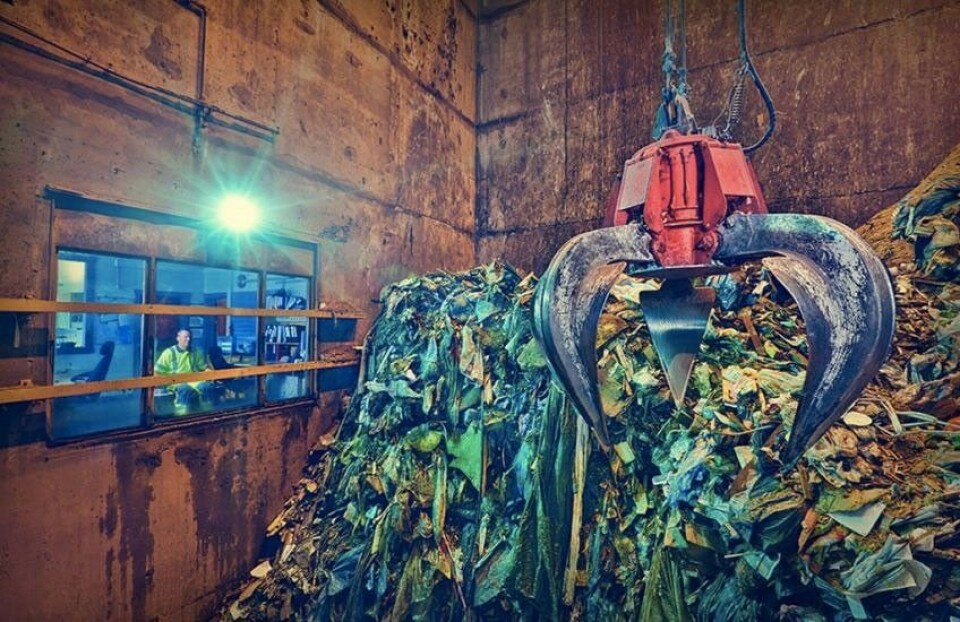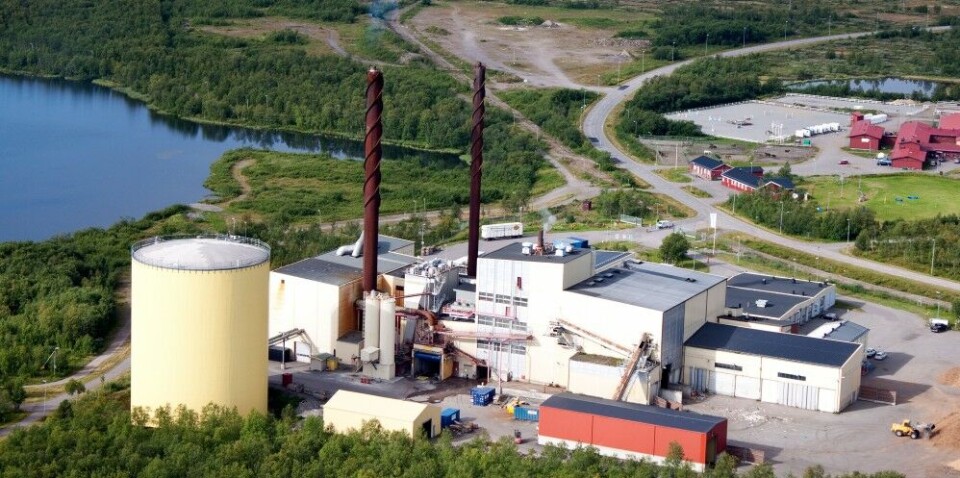
Trading with waste in Barents Region
The widely bespoken waste trade between Norway and Sweden has grown drastically in the last decade with significant effects on both the environment and the society.
The question was recently raised at the annual meeting of the Nordic Council of Ministers, where the Social Democratic Group are skeptical to the ongoing trade. However, with the current policy shift in Finland, as the country seeks to divert from the use of landfills, the waste trade is rather expected to extend further eastwards as Finland starts putting more waste on the market.
The debate concerning interregional waste trade the Barents regions has been going on for years and Norway, who has become increasingly dependent on export of waste, recently announced that the export is essential for attaining the country’s environmental targets. Today Norway exports 1.7 million tons of waste, which represents a fivefold increase since 2007. Sweden is the major importer of Norwegian waste and, according to the Swedish Environmental Agency, Norwegian waste represents 57 percent of the total waste imports. Reflecting the recent export trend in Norway, Swedish waste import has increased from 0.6 tons in 2007 to 2.1 million in 2013.
The boom in waste trade in the Barents region is the result of multiple factors. In 2009, Norway prohibited the use of landfills and thus there was a growing need for other types of waste treatment. Sweden is among the leading countries on energy extraction from waste and has the highest energy extraction rate in Europe, amounting to 3 MWh per ton and 50.3 percent of the total quantity of waste, according to a report by Avfall Sverige. Extensive material recycling, with 97 percent of all domestic waste recycled, has caused a lack of fuel in Sweden, which, in combination with high energy efficiency, has resulted in a drop in Swedish treatment fees for waste combustion. These developments coincided with the liberalisation of waste management in Norway and has made it difficult for Norwegian companies to offer competitive alternatives.
The issue was recently raised at the Nordic Council of Ministers’ annual ministerial meeting in Reykjavik last month. The Social Democratic Group questioned the current export of Norwegian waste to Sweden on environmental grounds and is critical to the regional waste trade. “Every day 50 lorries transport waste from western Norway, right across eastern Norway and then to Sweden”, notes members of the Social Democratic Group in the proposal for a new investigation of the waste trade. “The environmental benefits of transporting waste up to more than 1000km for combustion must be questioned, especially since there have been massive investments in modern combustion plants in Norway in recent years”.
The Norwegian Environmental Agency on the other hand reports that exports of waste is in many cases, not only a cheaper alternative but also better for the environment. The higher energy efficiency of Swedish combustion plants thus compensates for the additional transport emissions. With the most northern waste-to-energy plant in Norway being situated in Trondheim, exporting waste also allows for reducing the transport distance in the northern regions where power plants in the north of Sweden may be in closer proximity.

Troms county is one of the regions that lack waste treatment capacity. “With the exception for waste from the fishing industry and domestic food waste, we have no plants that deal directly with waste recycling”, says May-Helen Holm, advisor at Regional Council of Troms. Although a new waste-to-energy plant is under construction and expected to be ready by 2017, this means that a lot of the waste is exported for incineration in Sweden.
Peter Lestander at Kiruna Kraft AB estimates that around 60 percent of the waste fuel burnt at the power plant is imported from northern Norway. “The waste comes from all of northern Norway really, but the majority is imported from Narvik, Harstad, Tromsø and Senja”, according to Lestander. He underlines the environmental benefits of the waste trade and point to the fact that lorries transporting goods from Sweden to northern Norway now can bring back waste rather than returning empty. Lestander also notes the positive impact on the Swedish communities and the company recently announced that it will provide Kiruna with the country’s cheapest direct heating in 15 years’ time. “It benefits the inhabitants of Kiruna who get heating and hot water in the tap. And it also creates job opportunities in both countries”, he says.
While there are clear benefits both to the Norwegian and Swedish communities it is difficult to estimate the financial gain from the trans-border trade. The Swedish energy company Bodens Energi imports 20 000 to 30 000 tons of waste from Bodø, Mo i Rana and all of Finnmark county every year. The treatment fee is 50 euro per ton, but the expansion of waste combustion has also lead to increasing investment costs. “Waste combustion requires a much more advanced furnace and gas cleaning systems than use of for example biofuels, which means that our investment costs are significantly higher”, says Lennart Jonsson at Bodens Energi.
So far, this portrays the waste trade as a win-win situation both in terms of social and environmental outcomes, but critics note that impact of the alternatives to waste-powered energy is often not considered. Rather than solely focusing on the cut in emissions, Avfall Norge underlines that it is equally important to look at the type of energy sources that the combustion of waste replaces. The report finds that waste combustion plants in Sweden largely replace other types of renewable energy, which often have lower climate impact than the combustion of waste, while it in Norway would be an alternative to fossil fuels. Thus, the net emissions would be lower if Norwegian waste was recycled as energy domestically rather than in Sweden.
Another point of criticism it would be more environmentally beneficial to import waste from other European countries where landfill is still the dominating method for waste management. Studies published by Fortum and Avfall Norge shows that despite the additional emissions resulting from the transport of waste, the net CO2 output decreases by more than 500 kg for each ton waste that is exported for energy production rather than deposited in landfills in the country of origin.
“As we see it, we take care of our share of the waste”, says Jonsson at Bodens Energi, referring to the waste production in the closest geographic proximity. “It would be less environmentally sustainable to import British waste to the north of Sweden while waste from Tana [in northern Norway] would have to be transported to a power plant in the mid-Sweden region. And Sweden already imports significant amounts of waste from the rest of Europe.”
The growth of waste combustion within waste management also has a negative effect on the market for material reuse. Avfall Norge reports that the choice between incineration and material reuse is largely determined by the cost of the two alternatives. Low costs of waste-based energy production thus removes the incentives for reuse of waste material and this is reflected in the recent recycling trends in Norway. The share of material sent for recycling has, since the peak of 31 percent in the early 2000s, decreased to 23 percent in 2013.
While the waste trade has so far been concentrated to Sweden and Norway, recent policy changes in Finland are expected to result in changing trade patterns. From the beginning of next year, landfills of biodegradable waste will no longer be permitted as Finland begins to divert from the use of landfills. As of today, approximately one third of the municipal waste in Finland ends up in landfills and, in order to implement the new prohibition several new waste-to-power plants have been constructed with the total incineration capacity of one million tons per year, compared to 200 000 tons in 2007.
The current changes in Finland and the need for alternative waste treatment literally brings more fuel to the Swedish waste sector and the Finnish Environmental Institute admits that the restrictions on landfills are likely to have implications on the export in the near future.
“It is believed that the incineration capacity in Finland is not yet sufficient for all the municipal waste”, says Hannele Nikander at the Finnish Environmental Institute. “The situation will be better in the coming years as two new incineration plants are opened. In the meantime, export will be an option.”
Today, Finnish waste only accounts for four percent of the total waste imports on the Swedish market. However, Lennart Jonsson at Bodens Energi believes that the new Finnish reforms will have a significant impact on exports from Finland. “The process of diversion from landfills that took place in Norway a few years ago is happening in Finland now. This means that there will be increasing amounts of Finnish waste on our market”, says Jonsson. “But as Tromsø will take care of the waste treatment in its proximity, once the new power plant is running, we don’t think that there will be any major implications for our business”.















